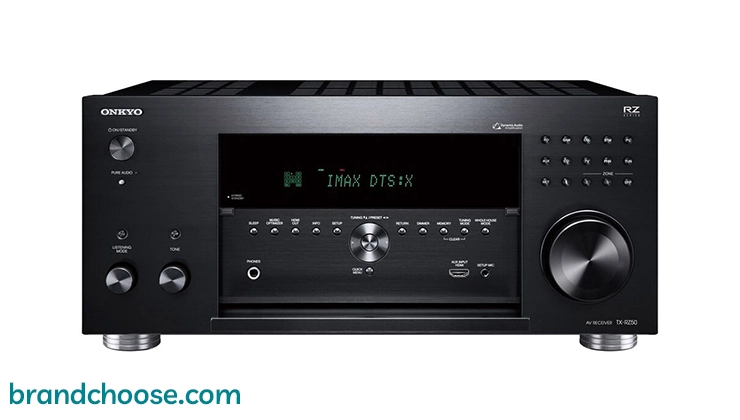
- Product Selection (4.6)
- Availability (4.5)
- Design/Look (4.1)
- Affordability (4)
- Quality/Durability (4.4)
- Reputation (4.3)
- Customer Support & Warranty (4.2)
- Sound Quality (4.3)
- Connectivity & Features (4.5)
Onkyo AV Receivers
In the world of home entertainment, the pursuit of captivating audio experiences often leads enthusiasts to the world of audio-visual (AV) receivers. Among the many options available, Onkyo AV receivers have emerged as icons of innovation, performance, and dependability. This article will delve into the unique features, pros, cons, and reasons why Onkyo AV receivers deserve a spot in your home theater setup. Understanding Onkyo AV Receivers Onkyo AV receivers form the backbone of your home entertainment system. They are meticulously designed to decode, amplify, and distribute audio and video signals with precision and clarity. Armed with advanced technology and a dedication to audio excellence, Onkyo receivers offer an immersive audio-visual experience that takes you to the heart of the action.

Connectivity Options
Onkyo, a well-known brand in the AV receivers category, offers a wide range of connectivity options that align with the latest technologies. Their AV receivers, such as the TX-NR696 and TX-NR595, support multiple HDMI inputs and outputs, digital audio inputs, and analog audio inputs. The receivers also have built-in Wi-Fi for wireless connectivity, and Bluetooth for streaming audio from compatible devices. They also support AirPlay 2 and Chromecast, allowing users to stream music, internet radio, and podcasts from their mobile devices directly to the receiver. Compared to other brands, Onkyo stands out for its inclusion of both legacy and cutting-edge connectivity options. For instance, the TX-NR696 includes a phono input for turntables, which is a feature not commonly found in modern AV receivers. However, one potential downside is that Onkyo's AV receivers do not have HDMI 2.1 ports, which are necessary for passing through 8K video signals. Brands like Denon and Marantz have already started including HDMI 2.1 ports in their AV receivers. Despite this, Onkyo's comprehensive connectivity options and support for various streaming technologies make it a competitive choice in the AV receivers market.
Emotiva AV Receivers
Emotiva has been a brand that has been associated with high quality audio products that are very affordable in the high end AV market. Thus, adopting the “Rethink High-End” slogan, the brand has established itself as a maverick that defies conventional expectations of audiophiles and home theater aficionados. Unlike some brands that put a premium on prestige, Emotiva aims at delivering serious performance and build quality at reasonable price points. This philosophy has helped them to gain a loyal customer base of those who seek high quality sound at a reasonable price.
In this article, we will consider Emotiva’s AV receivers through several parameters, which will help to get a holistic view of what the brand has to offer. Starting from their advantages in terms of sound quality and construction reliability up to their drawbacks in terms of the contemporary connectivity and additional features, we will discuss all the shades of Emotiva’s approach to AV equipment.











